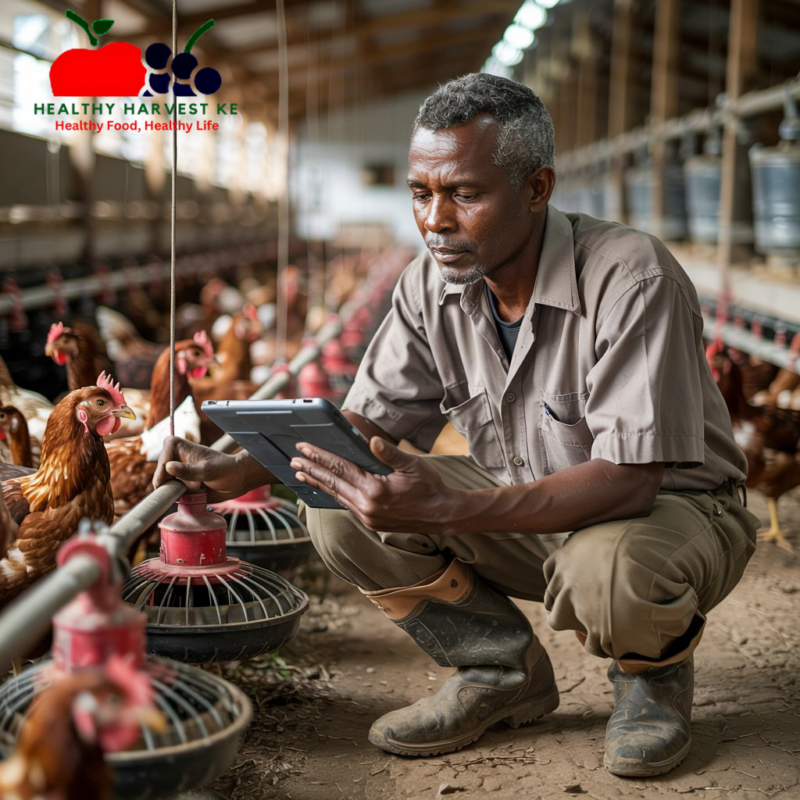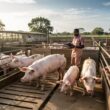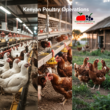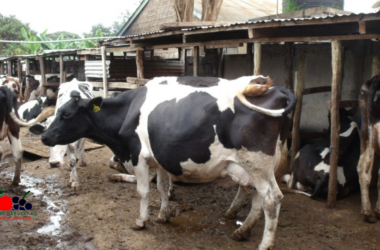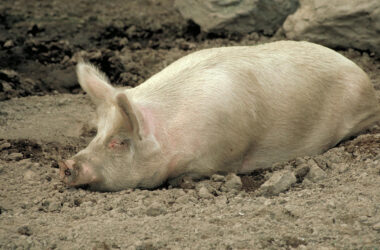The Booming Poultry Scene You Can’t Ignore
Let’s cut to the chase – chicken farming in Kenya isn’t just another agricultural trend; it’s a full-blown economic revolution. Whether you’re eyeing a side hustle or contemplating a career pivot, the Kenyan poultry sector is serving up opportunities that are hard to overlook.
The numbers don’t lie. Kenya’s poultry market has been on a serious upward trajectory, showing significant growth in 2024 compared to previous years. This isn’t just random luck – it’s driven by urbanization, a growing middle class with more money to spend, and changing food preferences as more Kenyans develop a taste for protein-rich diets.
What makes chicken farming particularly attractive is its versatility. You can start small with a backyard operation and scale up as you gain confidence, or dive straight into a commercial venture if you’ve got the resources and know-how. From indigenous “kienyeji” chickens scratching around rural homesteads to state-of-the-art commercial broiler operations, the sector accommodates various ambitions and investment levels.
Before you dismiss this as just another farming venture, consider this: chicken farming offers one of the quickest returns on investment in the agricultural sector. While your coffee plants are still deciding whether to grow and your avocado trees are taking their sweet time to mature, your broiler chickens could be market-ready in just six to eight weeks.
Types of Chicken Farming Systems: Finding Your Lane
Not all chicken farming is created equal. Knowing which system aligns with your goals, resources, and market opportunities is crucial before you start building coops and ordering chicks.
Broiler Farming: The Sprint Runner
Think of broiler farming as the sprint of the poultry world – fast, intense, and requiring precision timing. These meat birds go from day-old chicks to market-ready in just 6-8 weeks, making this an attractive option if you’re looking for quick returns.
Broiler farming requires:
- Intensive management of nutrition and temperature
- Careful disease prevention protocols
- Substantial technical knowledge
- Quick market connections (primarily urban hotels and restaurants)
The rapid production cycle means you could potentially run 5-6 batches annually, but don’t be fooled – this isn’t a set-it-and-forget-it operation. Broilers need specific commercial feeds formulated for optimal growth, and they’re considerably more sensitive to environmental changes than their hardy indigenous cousins.
Hotels constitute one of the major markets for chicken meat in Kenya, so if you’re located near urban centers or tourist areas, broiler farming might be your golden ticket.
Layer Farming: The Marathon Runner
If broiler farming is a sprint, layer farming is definitely a marathon. Your birds won’t start producing eggs until they’re around 18-22 weeks old, but once they do, they’ll keep laying for approximately 72 weeks, providing a steady income stream that many farmers find appealing.
The layer farming proposition:
- Longer-term investment but stable returns
- Consistent daily income from egg collection
- Requires attention to lighting programs and nutrition
- Major markets include schools, hotels, and households
Layer farming demands patience and meticulous record-keeping to track productivity, but the reward is a relatively stable income that isn’t subject to the same market fluctuations as meat production. Schools, hotels, and homes constitute the biggest markets for poultry eggs in Kenya, with egg consumption rates being relatively higher than meat consumption in many parts of the country.
Indigenous Chicken Farming (Kienyeji): The Heritage Runner
There’s something to be said for sticking with tradition. Indigenous chicken farming, locally known as “kienyeji,” involves raising native breeds that are hardy, disease-resistant, and capable of thriving with minimal inputs.
The kienyeji advantage:
- Lower input costs (birds can scavenge for a portion of their feed)
- Premium market prices due to consumer preference for taste
- Dual-purpose production (both meat and eggs)
- Better adaptation to local environmental conditions
While indigenous chickens take longer to reach market weight compared to broilers, many consumers are willing to pay premium prices for their meat and eggs due to perceived superior taste and health benefits. This makes indigenous chicken farming particularly viable in rural areas where resources might be limited but land is available for free-range systems.
The Economic Wins of Chicken Farming in Kenya
Let’s talk money – because ultimately, that’s what will determine whether your chicken farming venture is worth pursuing. The economic benefits extend beyond just selling eggs and meat.
Quick Returns and Low Startup Costs
Unlike other agricultural ventures that might take years to generate income, chicken farming offers relatively quick returns, particularly broiler operations where birds reach market weight in 6-8 weeks. The startup costs are also comparatively low, making poultry farming accessible to entrepreneurs with limited capital.
Chicken farming has low startup costs compared to other livestock enterprises, allowing you to start small and gradually expand as you gain experience and capital. This scalability creates a pathway for growth that’s often missing in other agricultural ventures.
Employment Creation and Value Chain Opportunities
The poultry sector doesn’t just benefit farmers – it creates jobs throughout the value chain:
- Feed production and supply
- Hatchery operations
- Farm management
- Transportation
- Processing
- Retail sales
Some entrepreneurs have achieved remarkable success, becoming financially very successful through commercial poultry farming in Kenya. This employment creation effect is particularly valuable in rural areas where alternative jobs may be limited.
Food Security and Nutrition Benefits
Beyond economic gains, chicken farming contributes significantly to Kenya’s food security. Both eggs and meat provide high-quality protein, vitamins, and minerals essential for human health. The accessibility of poultry products, particularly eggs, makes them an important protein source for many households that might otherwise struggle to afford animal-source proteins.
Real Talk: Challenges You’ll Face in Kenyan Poultry Farming
Before you dive in, let’s be real about the hurdles you’ll need to overcome in this business. Knowing the challenges upfront helps you plan more effectively.
Disease Management: The Silent Profit Killer
Disease outbreaks can decimate your flock and your profits in a matter of days. Newcastle disease, fowl typhoid, and other poultry diseases are common challenges that require vigilant management.
One farmer reported losing more than 800 birds to a mysterious disease suspected to have spread from a neighboring piggery farm, highlighting how vulnerable your operation can be without proper biosecurity measures.
Prevention strategies include:
- Implementing strict biosecurity protocols
- Regular vaccination programs
- Proper coop sanitation
- Limiting visitor access to your farm
- Quarantining new birds before introducing them to your flock
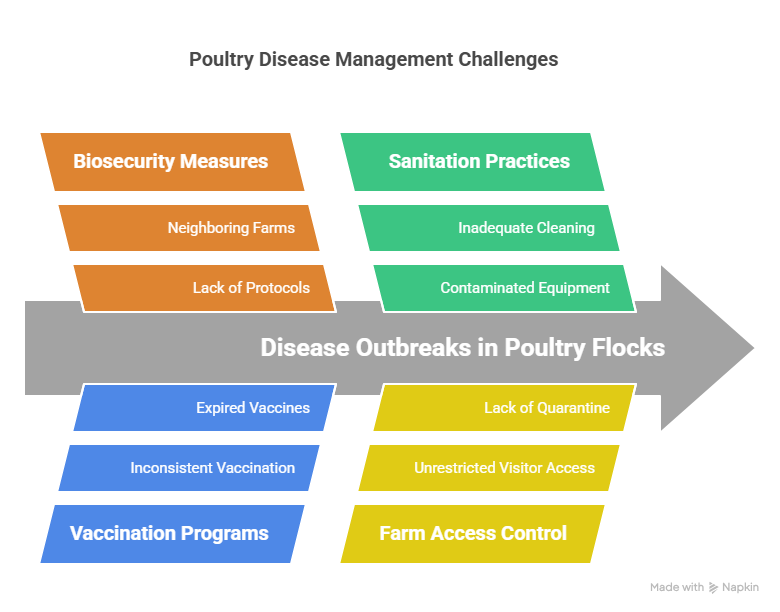
Feed Costs: The Profit Margin Squeezer
Here’s an eye-opener – feed expenses typically account for 60-70% of total production costs in chicken farming. This makes feed management one of the most critical aspects of running a profitable operation.
The feed dilemma many farmers face:
- Premium feeds from established brands like Unga and Pembe offer quality but at higher costs
- Cheaper alternatives may compromise on nutritional content, affecting bird performance
- Uncertainty over feed quality from different poultry feed brands in the Kenyan market leaves farmers gambling with their biggest expense
Some farmers try to reduce costs by mixing commercial feeds with locally available ingredients, but this requires knowledge of nutritional requirements to avoid deficiencies that could affect bird health and productivity.
Market Volatility: The Unpredictable Element
Price fluctuations in both egg and meat markets can wreak havoc on your business planning. Unstable egg and meat prices represent a significant challenge for poultry farmers in Kenya, driven by seasonal variations, holiday periods, or sudden market disruptions.
The market demonstrated signs of volatility, with consumption peaking in 2018 before experiencing periods of stagnation. Such fluctuations make long-term planning difficult, especially for small-scale producers with limited financial reserves.
Public Health Concerns: The Regulatory Challenge
As chicken farming expands in urban and peri-urban areas, public health considerations have become increasingly important. Many poultry farms have low biosecurity levels, which creates public health risks through potential disease transmission and food safety hazards.
A recent survey revealed that 60% of broiler farmers interviewed slaughter chickens at the farm or in live bird markets, often in non-designated facilities that don’t meet regulatory standards. This practice contravenes the existing Meat Control Regulations 2010, which could lead to legal issues and market access restrictions as enforcement tightens.
Setting Up for Success: Starting Your Poultry Farm Right
Getting off on the right foot can make all the difference between a thriving business and a costly lesson. Here’s how to lay a solid foundation for your chicken farming venture.
Learn Before You Leap
Before investing your hard-earned money, take time to learn the practical aspects of poultry farming. For aspiring poultry farmers in Kenya, practical learning represents an essential first step before investing capital in the business.
Practical learning should include:
- Visiting established farms to observe operations
- Attending training programs offered by agricultural extension services
- Working with experienced farmers to gain hands-on experience
- Understanding the daily routines and management practices
This learning phase helps you understand the realities of poultry farming and assess your readiness for the challenges involved.
Know Your Market Before You Produce
Market research is not just for corporate giants – it’s essential for poultry farmers too. Potential farmers should analyze both local and international markets to identify viable opportunities.
Questions to answer through market research:
- Who will buy your eggs or meat?
- What prices can you realistically expect?
- Who are your competitors and what advantages do they have?
- Are there niche markets you could serve (e.g., organic, free-range)?
- What are the seasonal demand patterns in your area?
Understanding your market helps you align production with demand, potentially reducing the impact of market volatility on your business.
Infrastructure That Works
Your chicken housing and equipment significantly impact bird health, productivity, and your workload. The housing must provide adequate space, ventilation, lighting, and protection from predators and harsh weather.
Equipment needs typically include:
- Appropriate feeders and drinkers
- Nesting boxes (for layers)
- Brooders for chicks
- Storage facilities for feed and eggs
For commercial operations, you may also need processing facilities or slaughtering areas designed to comply with regulatory requirements. The FAO’s checklist for broiler units and slaughter slabs provides guidance on appropriate facility design that supports good hygiene practices.
Smart Management Practices That Set You Apart
Once your farm is up and running, these management practices will help you maximize productivity and profitability.
Nutrition Management: Getting the Balance Right
Providing balanced diets appropriate for different growth stages and production purposes is essential for optimal performance. While commercial feeds can be expensive, they often provide better nutritional balance that supports productivity.
Nutrition considerations:
- Different requirements for starters, growers, layers, and broilers
- Balance between feed cost and bird performance
- Consistent water supply of good quality
- Strategic use of supplements when necessary
Health Management: Prevention Over Treatment
A comprehensive health management program includes preventive measures like vaccination, biosecurity protocols, and regular health monitoring. Implementing strict biosecurity measures helps prevent disease introduction and spread, reducing mortality and treatment costs.
Essential health practices include:
- Regular cleaning and disinfection of housing and equipment
- Controlling visitor access
- Quarantining new birds
- Proper disposal of dead birds
- Developing relationships with veterinary service providers
Record-Keeping: Your Decision-Making Tool
Though identified as a challenge for many farmers, comprehensive record-keeping is essential for tracking productivity, identifying problems early, and making informed decisions.
Key records to maintain:
- Daily egg production (for layers)
- Feed consumption
- Mortality rates
- Medication and vaccination history
- Income and expenses
- Growth rates (for broilers)
Simple digital tools and mobile applications can make record-keeping more manageable and provide valuable insights for optimizing operations.
Future Prospects: Where Is Kenyan Poultry Farming Headed?
The future looks promising for chicken farming in Kenya, with several opportunities on the horizon.
Growth Trends and Technological Integration
The Kenyan poultry market has shown consistent growth, with production and consumption metrics indicating expanding opportunities. As technologies and management practices advance, further yield improvements can be expected, creating opportunities for more efficient operations.
Digital technologies offer significant potential for addressing current challenges:
- Mobile applications for record-keeping
- Market information systems
- E-commerce platforms connecting farmers directly to consumers
- Innovations in housing design and climate control
Value Addition Opportunities
Processing chicken meat into higher-value products like sausages, nuggets, or marinated cuts could increase profit margins and expand market opportunities. Developing egg processing facilities could extend product shelf life and open new market segments.
Collaborative Approaches
Farmer cooperatives or producer organizations could help address challenges related to input costs, market access, and knowledge sharing. By pooling resources, farmers could achieve economies of scale in purchasing inputs, investing in shared infrastructure, or accessing markets that might be beyond the reach of individual producers.
The FAO’s intervention focused on process-oriented certification demonstrates the potential of collaborative approaches to improve standards and practices across the sector.
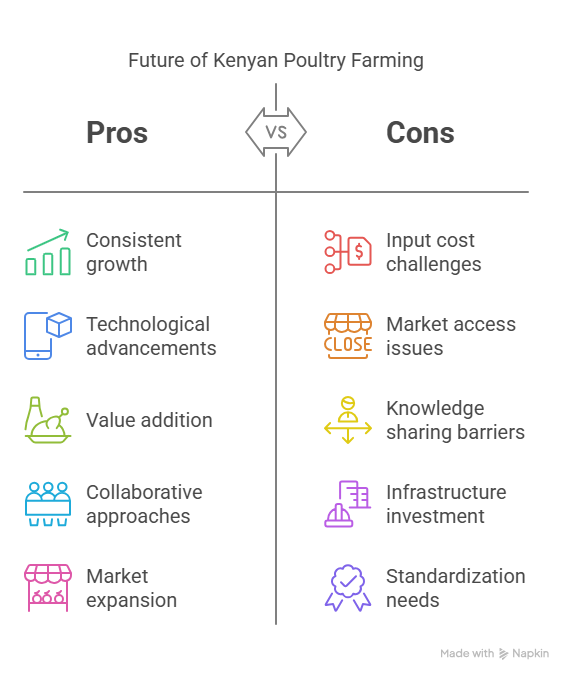
Your Next Steps in the Poultry Business
Chicken farming in Kenya offers diverse opportunities for entrepreneurs willing to learn, adapt, and overcome challenges. Whether you choose broiler, layer, or indigenous chicken farming, success depends on thorough preparation, effective management, and responsiveness to market dynamics.
The sector has demonstrated remarkable growth potential, driven by increasing domestic demand and changing dietary preferences. Despite challenges like disease management, feed costs, and market volatility, strategic approaches to these issues can lead to profitable and sustainable operations.
As you consider entering this vibrant agricultural subsector, remember that knowledge acquisition should precede investment. Visit successful farms, attend training programs, conduct thorough market research, and develop a comprehensive business plan before committing significant resources.
The future of chicken farming in Kenya looks promising, with opportunities for technological integration, value addition, and collaborative approaches that could transform the sector into an even more significant contributor to Kenya’s agricultural economy.
Ready to start your poultry farming journey? Begin with research, learning, and planning – then hatch your business with confidence.




